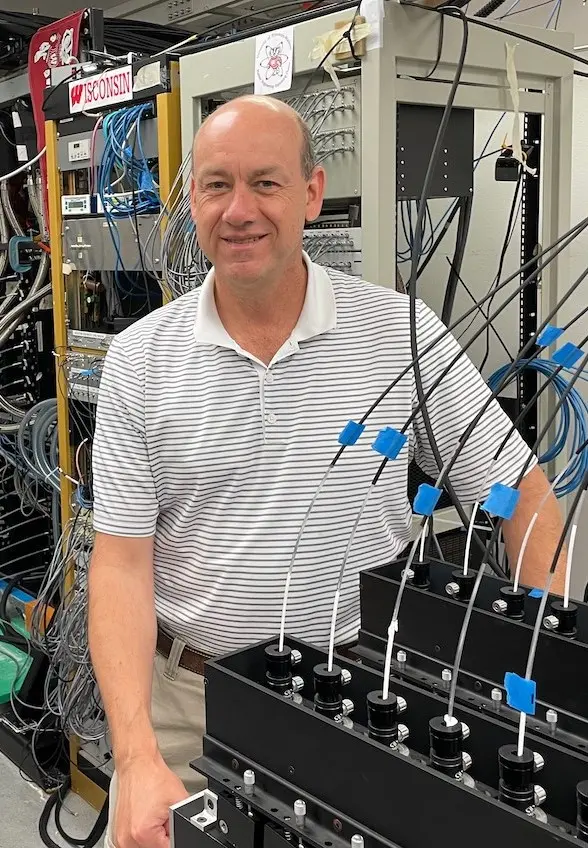 George McKee
George McKee
George McKee, a senior scientist in the University of Wisconsin-Madison Department of Nuclear Engineering and Engineering Physics, has been appointed as the permanent leader of the Burning Plasma Physics (BPP) Group in the Experimental Science Division of the DIII-D National Fusion Facility.
Located at the General Atomics company in San Diego, California, and supported by the U.S. Department of Energy Office of Science, Fusion Energy Sciences, DIII-D is the largest operating magnetic fusion research facility in the United States. The BPP Group pursues research into a range of magnetic fusion energy science topics, including turbulence and transport, low-to-high confinement transitions, rotation physics, energetic particle physics, and advanced heating and current drive methods in tokamak plasmas. Researchers in the BPP Group come from multiple universities, national labs, and General Atomics, and include graduate students, postdoctoral researchers, scientists, and faculty from across the country, all working towards a common goal of developing fusion energy systems.
“I’m very excited to advance fusion science and energy research and to further enhance opportunities for universities through the Burning Plasma Physics Group at DIII-D,” McKee says.
After earning his PhD in nuclear engineering and engineering physics from UW-Madison, McKee joined the DIII-D program in 1996 as a DOE postdoctoral research fellow, where he worked with Oak Ridge National Laboratory to implement spectroscopic instruments for plasma divertor and impurity studies.
He later joined UW-Madison as a research scientist. At UW-Madison, McKee helped to develop and implement Beam Emission Spectroscopy (BES) and related fluctuation diagnostics on DIII-D. He has successfully led a scientific program of plasma turbulence studies, including measuring the gyroradius scaling of turbulence, identifying zonal flows/geodesic acoustic modes, imaging of core turbulence, and understanding impurity-induced suppression of turbulent transport.
He has also directed the advanced diagnostic development program between UW-Madison and DIII-D, mentored UW-Madison graduate students and postdoctoral researchers, and led the deployment of a BES fluctuation diagnostic on NSTX-U at Princeton Plasma Physics Laboratory and HL-2A, at the Southwestern Institute of Physics, Chengdu, China. UW-Madison graduate students have had the opportunity to pursue research at some of the most advanced fusion facilities in the U.S. and world through these collaborative research programs. He is a fellow of the American Physical Society.